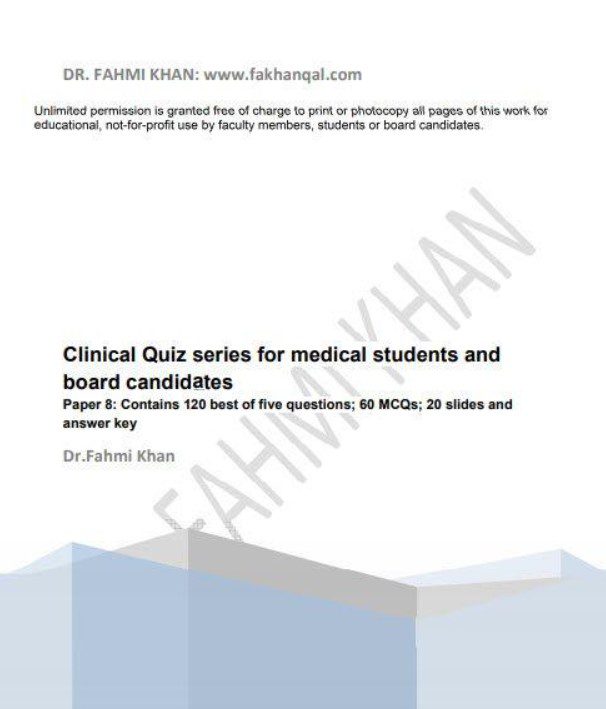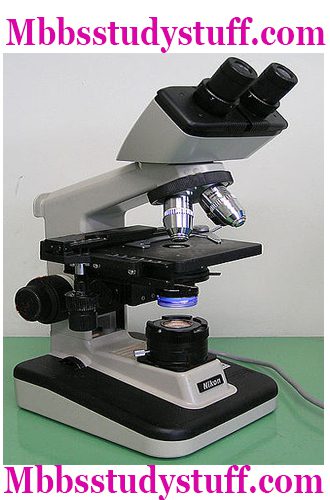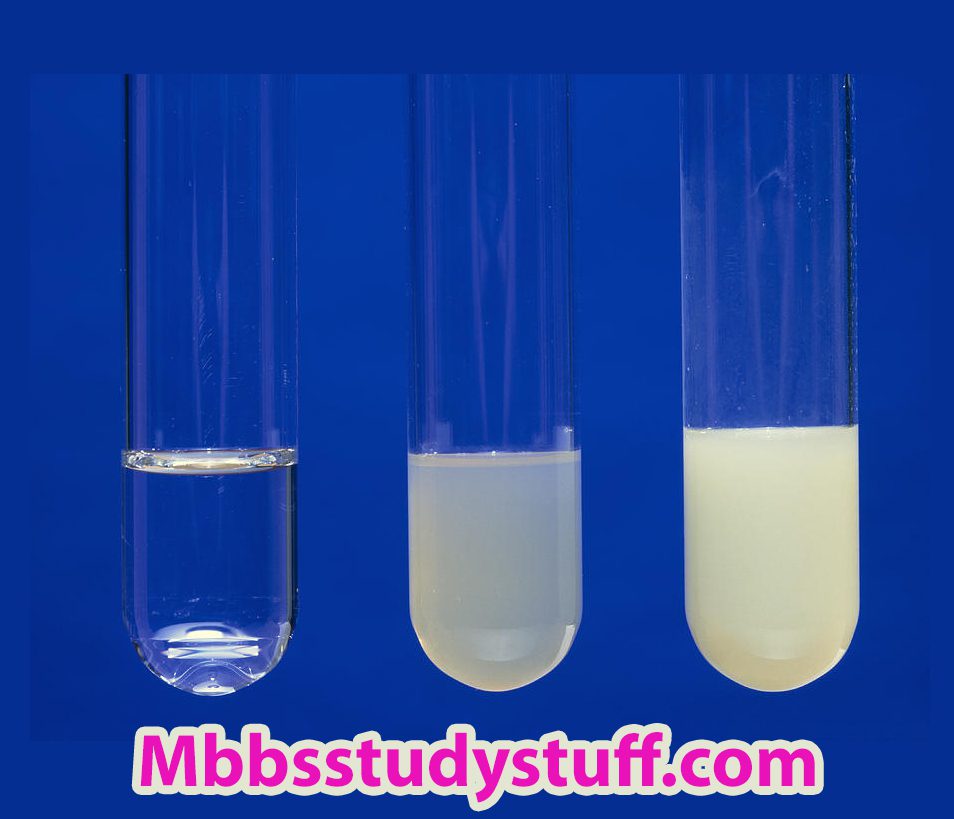Method determination of red blood cell (RBC) count:
APPARATUS:
Neubauer’s chamber (thick slide), RBC diluting fluid, microscope, coverslip, pricking needle (blood Lancet) and spirit swab.
RBC Diluting Fluid (Hayem’s Fluid)
Sodium chloride (NaCl): 0.5 gm, to maintain isotonicity of fluid.
Sodium sulphate (Na2SO4): 2.5 gm, which breaks RBCs and prevents their rouleaux formation.
Mercuric chloride (HgCl2): 0.25 gm act as preservative (antibacterial and antifungal) Distilled water (H20): 100 ml. For dilution
RBC COUNTING METHODS
1. Electronic counting method
2. Visual counting method by Thomas Rule (Leave, Lower, Left)
PRINCIPLE
The number of RBC is very high so blood is diluted 200 times with diluents. Red blood cells are counted in diluted blood and actual count is calculated by multiplying by dilution factors. So the product of the number of cells calculated per cu mm (mm3) diluted blood and the dilution factor gives the number of red blood cells per cu mm in undiluted blood.
Red blood cell (RBC) count PROCEDURE
1. Take about 3-5 ml Hayem’s fluid in a watch glass.
2. Prick the ring finger after cleaning it with spirit swab.
3. Wipe off the first drop of blood. Suck the next drop in RBC pipette exactly up to 0.5 mark, taking care that there should be no air bubble. If excess blood has been drawn, ‘ remove it by touching the pipette on the cotton swab very carefully.
4. Wipe off the blood sticking around the tip of the pipette with cotton swab.
5. Now suck the haymes fluid in the pipette up to mark 101.
6. The pipette is then kept horizontally between palms and rolled gently for a minute to mix the blood with diluting fluid.
3. Focus Neubauer’s chamber under low power (1_O\x) objective of microscope.
9. remove the chamber form microscope and place a coverslip on it.
Discard first 2 drops 0f fluid from the pipette which is unmixed fluid present in the stem of the pipette.
10. Charge Neubauer’s chamber:
- Small drop of fluid is allowed to form at the tip of pipette.
- Bring the top of the pipette near the edge of the cover slip on central platform in such a way that it will make an angle of about 45° with central platform
- Fluid will be drawn in capillary space below the cover slip. Once the fluid enter below cover slip immediately remove the pipette from central platform.
11. Wait for 3-5 minutes to settle the cells and put the charged Neubauer’s chamber under low power of microscope. With the help of fine focusing see that there should be the uniform distribution of RBCs, if it is not, recharge the chamber again.
12. Focus the Neubauer’s chamber under (40x) high power and count the cells in five medium size squares (R1, R2, Rs, R4 & R5). There are 16 small squares in each medium size square so the total small squares are 80.
RULES FOR COUNTING THE CELLS
- Any cell which is lying half or more than half or complete in the same square.
- Counting is started from left and upper border of square.
- Among the triple line central line should be considered as the main line for counting of cells.
- Cells of lower and right border should also be counted at the end of each row. e.g. In medium size square R1, the number of cells are as follows:
Square 1 -2 cells
Square 2 -1 cells
Square 3 2 cells
Square 7 -1 cells
Square 9 -2 cells
Square 11 1 cells
Square 12 -1 cells
Total cells in R1 square = 10.
During counting enter the number of cells present in different small squares in the square drawn on paper in a similar way as in Neubauer’s chamber.

CALCULATIONS
Dilution factor: 0.5 part of blood mixes in total 100 parts of mixture (99.5 parts diluting fluid). Fluid present in the stem (1.0 part) does not take part in mixing. This is why 2-3 drops of fluid (present in the stem) is discarded before charging the chamber.
Dilution factor = Total volume of bulb 100 parts / Volume of blood taken (0.5 part)
= 100/0.5 = 200
Area of medium size square (R)
= 1/5 x 1/5 = 1/25 mm³
Depth of chamber = 1/10 mm
Volume of each medium size square (R)
= 1/25 x 1/10 = 1/250 cu mm
Total volume of 5 squares (R1+R2+R3+R4+R5) = 1/250 x S = 1/50 cu mm . Suppose total number cells counted in five (R1+R2+R3+R4+R5) squares = N Number of cells counted in 1/50 mm3 in diluted blood = N ‘ Number of cells counted in 1 mm3 diluted blood
Suppose total number cells counted in five (R1+R2+R3+R4+R5) squares = N Number of cells counted in 1/50 mm3 in diluted blood = N ‘ Number of cells counted in 1 mm3 diluted blood
Number of cells counted in 1/50 mm3 in diluted blood = N
Number of cells counted in 1 mm³ diluted blood = N x 50
Number of cell in 1 mm³ undiluted blood
= N X 50 X 200
RBC count = N x 10000/mm³
Normal RBC Count
In adult male – 5.5 million/cu mm (5-6 million) In adult female-4.8 million/cu mm (4.5-5.5 million)
In adult female-4.8 million/cu mm (4.5-5.5 million)
PRECAUTIONS
1. RBC pipette, Neubauer’s chamber and coverslip should be clean and dry. Hold the coverslip from its
2. Hold the coverslip from its edges, not from its flat surfaces.
3. Don’t take more time in filling the pipette with blood (blood will clot in the pipette). 4. There should not be under charging or over charging.
4. There should not be under charging or over charging.
PHYSIOLOGICAL VARIATIONS
1. Age: In new born baby it is more.
2. Sex: More in male.
3. High attitude: Increase RBC count at high altitude_
PATHOLOGICAL VARIATIONS
1. Hypoxia
2. Polycythemia vera
Also read out Haemocytometer – Improved Neubauer’s chamber








When did Neubauer’s chamber ‘s method start? Could you possibly tell me ,thank you very much !